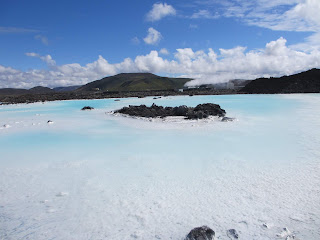WHATTA YAT? *
“The three cardinal tenets of
rum drinking in Newfoundland. The first of these is that as soon as a bottle is
placed on a table it must be opened. This is done to 'let the air get at
it and carry off the black vapors.' The second tenet is that a bottle,
once opened, must never be restoppered, because of the belief that it will then
go bad. No bottle of rum has ever gone bad in Newfoundland, but none has ever been restoppered, so there is no way
of knowing whether this belief is reasonable. The final tenet is that an open
bottle must be drunk as rapidly as possible ‘before all to-good goes out of it.’” - Farley
Mowat
Known
locally as The Rock, Newfoundland is part of the Canadian province of
Newfoundland and Labrador. It became part of Canada only in 1949 after a close
vote in a referendum on whether to confederate with Canada, be part of Britain,
or be independent. It previously had been a British colony, then for a few
years was an independent Commonwealth, returning in the 1930s to a
British-controlled Commission of Government when the Great Depression devastated
the island’s economy. In fact, there had been two votes: in the first
referendum, none of the three options received the requisite majority, so a
second vote was held as between the two top vote-getting options of joining
Canada or reverting again to self-government.
Today,
Newfoundland and its largest western-side city of Corner Brook are thriving,
thanks to such industries as paper, fishing, and oil. Corner Brook’s paper mill
is the 12th largest in the world.

Lobstering is an important industry, as is fishing, with one of the primary catches being the capelin, a small fish the size of a sardine. Its roe is a coveted delicacy in Japan, and it is eaten locally by being dredged in flour and fried. While lobster also is popular, it once was considered a poor person’s meal and still is treated with disdain by some locals (who nevertheless are happy to sell it to the rest of us).
Our ship
docked in Corner Brook, and we took a tour around the western part of
Newfoundland, visiting a lobstering pier, a local church/school/public library,
and a couple of scenic viewpoints, including a monument to Captain Cook. Cook,
then a lieutenant, had spent an extended period surveying Newfoundland,
producing a map of the island that is still considered definitive and used to
this day.
Our day in
Corner Brook had started out overcast, but by afternoon had become sunny and
pleasant. The day before was supposed to have been spent in Sydney, Nova
Scotia. Unfortunately, we encountered a force 10 storm, with 16-foot waves,
that made entry into that harbor dangerous, and thus we spent a day at sea (and
the night before) bouncing and rocking in roiling waters. By evening we had
sailed beyond the storm and all was calm again, but the day had been a rough
one.
*Common
Newfoundland greeting that means “what are you doing”?





Comments
Post a Comment